For starters, I ask you to look at a lovely brown-shingle on Parker and see Red Sun Rising, a Very Political collective that devoted considerable time and energy to a dispute between the men and women of the collective over whether they should use counterfeit tickets handed out by anarchists to see the Rolling Stones play at Winterland in San Francisco.
They were playing with Stevie Wonder.
The women, objecting to the lyrics of “Under My Thumb,” advocated a complete boycott of the performance.
The men argued that using the counterfeit tickets would be a revolutionary act. They pointed out that the collective had seen the Stones perform in Oakland the year before:
Good reason to fight!
P.S. The Stones did not play “Under My Thumb” that night.
UPDATE: I always took the story about the anarchists with counterfeit Rolling Stones tickets as partly truth, partly fiction. And then I found an account from someone who had been part of the anarchist collective that produced the counterfeit tickets.
I now believe that this story is all truth.
In the late 1960s and early 1970s, we felt hope and despair in equal doses. The young of Berkeley borrowed liberally from the cultural crucible of the hippie movement in San Francisco, but infused it with the politics of the New Left. They may have looked something like their counterparts in San Francisco (minus the Robin Hood felt hats and medals from the King of Norway and vests and ribbons and reflectors and leather aviator helmets and tunics and capes and wizard hats), but they espoused political values generally not found in the Haight.
Communes and collectives sprung up in Berkeley. Just as Chairman Mao told us to let a thousand flowers bloom, so bloomed intentional communities of the young in Berkeley. We tended to use the word “collective” more than “commune” here. We were serious. We were political. We were revolutionaries. There were some of the New Left, the most Marxist, who saw youth culture as counter-revolutionary and who shunned communes of collectives. For the most part, though, Berkeley embraced both political and cultural change. And we had new ways of living together.
But, even here in our collectives, In those days – patchouli oil and sandalwood and Krishna musk incense mingling with the smell of marijuana and cat littler boxes and burned stir-fry and Very Ripe fruit, dashikis and peasant blouses and denim overalls and no bras, Jesus Christ strung-out hair and Afros and gnome beards, Native American and Asian religious iconography, posters of Che and Uncle Ho and the Cuban Revolution and the FBI wanted poster for Angela Davis, the Whole Earth Catalogue sitting on the chair covered with an American flag next to the bowl of brown rice, leftover Buddhism and Hinduism plus Blake and Alduous Huxley and Bucky Fuller and Jung’s theory of synchronicity and Hesse and Kerouac and Marx and Trotsky, psychedelic rock and the Jefferson Starship tearing down the wall and taking a sister by the hand, or maybe the MC5 kicking out the jams, talk of revolution and a certainty of revolution and a certainty of being right, group dinners and chore lists and endless endless endless group meetings and macrobiotics and bread baking and Our Bodies Ourselves – outlaws in the eyes of America.
Today – not so much. What a lesson in then and now! Let’s listen to Bobby Rey’s “If These Walls Could Talk” and look at now and imagine then. I learned much of what I repeat here about our communes and collectives from The McGee-Spaulding-Hardy Historic Interest Group and their posting “The District Goes Radical.”
Let’s start with Red Sun Rising, already mentioned above.
Red Sun Rising existed for several years on Parker Street.
A collective member made this painting in 1972. At the time, members of Red Sun Rising were managing several houses on Parker Street and Hearst Street as a result of their victory in the Berkeley Tenants Union Strike against the Bachenheimer holdings.
It was, along with the Red Family on Bateman and several others, at the radical end of the spectrum. Many Red Sun Rising members were involved with the Campus Anti-Imperialist Coalition. They were capable of dense writing. In The Basis of Unity for the Campus Anti-Imperialist Coalition they wrote: “The CAIC was formed as a result of the positive outgrowth of the increased level of consciousness in the student movement. For almost a year now the movement has been in a process of internal education, examining not only ourselves but also getting a better understanding of what it is we stand for and what it is that we are up against.” They were also capable of whimsy.
When the Coalition was thrown off campus, they formed the Campus Friends of the NLF. Accusations of treason were tossed off – “Oh, that was a typo, it is supposed to be Campus Friends of the NFL. We like football.”
Their sense of humor is also evident in the counter-orientation of new students which they called Disorientation. The Disorientation gave new students the radical history of campus struggles and the real biographies of some of the magnates/robber barons whose names grace campus buildings.
The collective existed beyond the walls of the Parker Street house. Several collective members did not live at the house, and when one spoke of Red Sun Rising, it meant a collective, not just the people living collectively on Parker. As in:
They worked out and put out posters and leaflets with great looks. They were good friends with members of East Bay Media, which put out some graphically brilliant posters. And then they left Berkeley. Those who are still alive remember their wild years on Park Street with wonder and pride.
Now look at the house and imagine the energy and passion and whistles for police and crime alerts. It is now a nice quiet brown shingle.
The musicians who would become Red Star Rising were frequent visitors on Parker Street and sang at the different collectives.
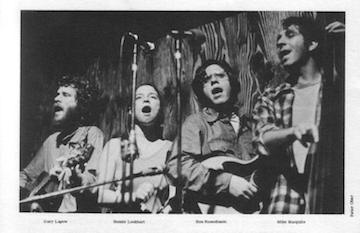 It is claimed that the line drawing on the cover of their 1974 album depicts Park Street backyards. I cannot verify this.
It is claimed that the line drawing on the cover of their 1974 album depicts Park Street backyards. I cannot verify this.
Also on Parker Street – address currently unknown – was the Chollima Collective.
천리마운동
Chollima was a 1956 state-sponsored movement in North Korea intended to promote rapid economic development. The movement emphasized “ideological incentives to work harder” and the personal guidance of Kim II-Sung instead of rational economic management. He gave guidance and instruction on issues about which he knew nothing. This was not a good idea. What a model for American youth!
The April 17-24, 1970 issue of the Berkeley Tribe contains this birthday wish for Kim Sung. “Peerless patriot, national hero, ever-victorious, iron-willed brilliant commander.” I guess it wasn’t just our friends on Parker Street who saw something good in North Korea.
Farther west on Parker, below Shattuck,, were two next-door houses that were home to an anarchist collective. They embraced the philosophy of Nestor Makhno.
Makhno was an anarchist/communist Ukrainian revolutionary who led a rogue anarchist army during the Russian Civil War. If you want to read his “The Struggle Against the State and Other Essays,” click here. The anarchist collectives on Parker were graced with an electric sign that said “Smash the State.”
They loved the Rolling Stones, especially “Street Fighting Man.”
I am not sure that Makhno would approve. But, in the end, what do I know? I don’t know the addresses of the anarchist houses on Parker. I’d like to.
The Fish-Clark House at 1545 Dwight was the communal home for a number of Free Speech Movement survivors. There are 16 bedrooms in the main house. Perfect for a commune!
From 1961 until 1971, Ralph Anspach, a professor at SF State, was a resident-owner.
His claim to fame – the Anti-Monopoly game and years of defensive and ultimately successful litigation over the game’s name.
In the early 1970s, the commune took the name “Village of Arts and Ideas.” Peter Clark lived here. He was an early explorer of alternative energy. Lee Felsenstein lived here.
He was key in Leopold Records’ Community Memory Project.
He then went on to play a central role in development of the personal computer.
The house became a Christian community in 1980 and then in 2002 was bought and converted to transitional housing for people recovering from addiction.
McGee’s Farm around the corner on McGee was centered around a men-alone-run childcare facility.
It was part of an attempt to smash the nuclear family.
Commune members participated in a food “conspiracy” – a great dysphemism for a food cooperative, and a cheese “conspiracy.”
Here – you can read more about McGee’s Farm.
Ratzlesnatch came into the world on Channing a collective and in 1977 legally established itself as a cooperative with each resident a shareholder in the cooperative. Residents were active in the Flatland Neighborhood Association and the Berkeley Tenants Union. It is hyptohesized that the name Ratzlesnatch (commonly spelled incorrectly as “Razzlesnatch”) came from the Katzenjammer Kids comic strip and represented a place of refuge from the oppressive adult world.
 It remains a cooperative. There is a free distribution box, a Wishing Well, in front of the house.
It remains a cooperative. There is a free distribution box, a Wishing Well, in front of the house.
The City tried to shut it down. The neighbors didn’t like it. It stayed.
The Circus on Grant was part commune, part workers’ collective. Here is where it got its name:
An e.e. cummings nonlecture put to poster by Sister Mary Corita Kent. Members of the Circus used the store on the corner as a meeting room.
They operated a wood-shop collective and were heavily involved in Gus Newport’s campaign for mayor in 1978.
Al Haber, a founder of SDS and draftsman of the Port Huron Statement, was one of the founders of the Circus. He soon returned to Ann Arbor where he has become the personification of aging radical politics there.
And Dragon’s Eye:
Dragon’s Eye, made up of several houses on McKinley, was formed in 1965 and lasted eight years.
Michael Rossman, a leader of the Free Speech Movement and founder of the Free University of Berkeley, was a founding member of Dragon’s Eye.
Before heading east to Bateman Street, I acknowledge that there is one commune that I haven’t succeeded in locating with certainty, the wonderfully named Karl Marx’s Magic Bus. It is variously reported as having been at 1631 Dwight (no such address) or on Channing (no house number given). I will find, I am sure.
Bateman Street is a sweet, quiet, narrow two-block lane between Telegraph and College, Alcatraz and Ashby. As Prince Street narrows going east to Bateman off Telegraph you know that this is still a magical place.
It is a received truth that Jane Fonda and Tom Hayden lived on Bateman for several years and that they collectivized with several other houses on Bateman and Hillegass as Red Family.
In an interview with Berkeley Planet reporter Ted Friedman, Fonda said that she never lived in Berkeley, but that she did bring her son to daycare on Bateman while shooting a film in northern California. While here, Hayden, Stew Albert, and Judy Clavir were instrumental in drafting the Berkeley Liberation Program.
It never got the traction that the Port Huron Statement did.
There are many similarities, and some differences. For one, the Berkeley Liberation Program explicitly embraced drug use: “We relate to the liberating potential of drugs for both the mind and the body politic.” Point #1 of the Program was of great interest as it specifically addressed Berkeley:
1 WE WILL MAKE TELEGRAPH AVENUE AND THE SOUTH CAMPUS A STRATEGIC FREE TERRITORY FOR REVOLUTION.
Historically this area is the home of political radicalism and cultural revolution.
We will resist plans to destroy the South Campus through University-business expansion and pig assaults. We will create malls, parks, cafes and places for music and wandering. Young people leaving their parents will be welcome with full status as members of our community. Businesses on the Avenue should serve the humanist revolution by contributing their profits to the community. We will establish cooperative stores of our own, and combine them within an Avenue cooperative.
What a plan! The Berkeley Tribe reduced the program to a simple, catchy image:
Slightly east on Bateman was a daycare facility for members of the collective:
It was known as Blue Fairyland. Country Joe McDonald has gathered a collection of reminisces about Blue Fairyland from parents and kids.
There is still a sense of mischief on Bateman. In the 1960s, disruptive residents would paint out the “E” and turn Bateman into Bat Man.
Some still do.
Will you let me throw in the original Berkeley Zen center, which was smack in the middle of Commune Row on Dwight?
For 12 years, starting in 1967, the Berkeley Zen Center lived here. The center was opened by Sojun Mel Weitsman (born 1929) is a Soto Zenroshi in the lineage of Shogaku Shunryu Suzuki-roshi, a Dharma heir of Suzuki’s son Hoitsu Suzuki. He writes of the house: “We loved that old two-story place, with its steep stairs leading to the large, square, attic, which we converted to a zendo, and the spacious yard, which became a thriving organic garden.” You can read more here. I learned this from a neighbor who was helping me establish that there was no 1631 Dwight, an address that I had been given for Karl Marx’s Magic Bus.
Before getting to the one big one that is not gone – a rule violation that I got cleared with the Committee on Rule Violations – let’s spend a minute with the One World family. In 1970, One World Family bought and moved into two houses on Prospect Street just east of campus:
There were lots of them.
They opened and ran a vegetarian restaurant on Telegraph, in the building that we now know as Amoeba Records.
At first, it was known as The Mustard Seed.
And then it was One World Family.
They painted a rainbow on the building that is still there. They published a vegetarian cookbook:
They served cheap vegetarian food:
And they had a band, straight rock and weirder:
So far, so good. Their values were altruistic. They didn’t hurt anybody. But it was just a tad weird. To say the least.
Allen Noonan was a sign painter in Long Beach. He made paintings as well, and I really like his work:
You can see more here.
And then something happened. These are not my words, but his/theirs:
Allen Michael has been a direct channel of the Universal Mind since he experienced a cosmic initiation in 1947. The experience that transformed Allen Noonan, as he was then known, took place in Long Beach, California, where he was a pictorial sign painter.
While painting an outdoor signboard, Allen was suddenly enveloped in a bright purple and gold light, and found himself (the entity in the body, not the body itself) being transported up into what he later realized was a Galactic Mothership. Upon materializing onboard the spaceship, he appeared before a great Light. And a Voice spoke to him out of the Light, telling him that he was chosen to be the messenger who would fulfill the role of being the New World Comforter and channel of the Everlasting Gospel.
He was given the name Allen Michael, reflecting the truth that he is incarnate in a body to make Michael’s Stand with the holy people of the world.
He accepted the mission, and from that point onward he has been in direct telepathic contact with the Universal Mind of ETI – Extra Territorial Intelligence – channeling the energies of the Spirit of Truth through the spoken and written word, as well as in deeds done that will bring this world up to and through our planetary cosmic initiation into the long awaited Kingdom of God.
And so on. Allen Noonan sign-painter became Michel Allen incarnate spiritual master from Galactica, a God-conscious soul dedicated to serving humanity, God’s Comforter Spirit of truth, embodied on the planet since April 1947, as a soul from Galactic Headquarters.
The Barb voiced concern about Noonan and his group.
The Barb detailed the flying saucer stuff, and then noted rather astutely that “Words known for their link to classical forms of fascism and totalitarianism pervade the One World World doctrine.” The Barb cautioned that “maybe people ought to know before digging too much on the Messiah’s newly-opening place.”
The One World Family left Berkeley in the mid 1970s. The commune houses were sold to the University and now house the Lothlorien student housing coop.
It is vegetarian. Clothing optional. Decisions by consensus. Middle Earth friendly.
I am resisting impulses to judge. I can give Lothlorien a pass, but it is just plain hard not to see One World Family as delusional. But – they didn’t hurt anybody.
Okay. Exhale.
And now – the best for last. The Hog Farm. Still with us, sometimes in Berkeley, sometimes in Laytonville. A fascinating commune, because it is so strongly associated with one man, Wavy Gravy.
Here are my fascinating connections with the Hog Farm and Wavy Gravy:
1) In the 1960s my sister Jeanne was a candystriper at the Bryn Mawr hospital. Wavy Gravy spent two months there undergoing and recovering from back surgery. He wasn’t Wavy Gravy yet. He was Hugh Romney.
2) On November 15, 1969, I served as a marshall in the stage area at the Mobe’s March on Washington. Hanley Sound, fresh from Woodstock, did the sound. That was exciting. The Hog Farm, fresh from Woodstock, fed the marshalls (me!) and the celebrities. Their bus was there. The two large signs on the bus that I remember said “We’ve come for your daughters” and “We’re in, let’s win.” Exciting! And it was cold!
What would Delilah and Emily say about those stories?
Great stories! So, back to the Hog Farm and Wavy.
Wavy is indelibly remembered for his presence at Woodstock – where he wasn’t yet Wavy Gravy. We tend to forget that. He was Hugh Romney. But even before Woodstock, the Hog Farm made a mark.
They played as extras – cast as hippies – in Otto Preminger’s inexplicable Skidoo.
After Woodstock the Hog Farm returned to their commune New Mexico and became a beacon for a new way of living.
 Berkeley ended up as their winter home, with summers spent in Laytonville. In Berkeley, we were reminded of Wavy from time to time.
Berkeley ended up as their winter home, with summers spent in Laytonville. In Berkeley, we were reminded of Wavy from time to time.
He ran a school.
He ran for City Council:
He launched a campaign for President.
He ended up in a mural at the Amtrak Station. And he was just Wavy Gravy. Visible. Part of our quirky quilt. The Hog Farm commune is a cluster of brown-shingles on the corner of Henry and Berryman.
I fantasize – a large crowd outside the compound. I lead them in a chant of “No Rain / No Rain…..” Wavy steps to the balcony and waves.
So there they are – the communes.
But wait! Something more?
Now – final answer – we are done with communes, but we are not quite done with the 60s. There are a few other “I see dead people”/”If these walls could talk” locations that we should see. Take a look at 2421 Oregon:
Wow! What a place. It is here that Max Scherr and his staff put out the Berkeley Barb starting in 1965.
Barb writer and eventual Yippie Judy Gumbo Albert wrote in On the Ground :”The house itself looked like a seedy sothern plantation. It had white Corinthian columns and a blue vinyl backseat of a car on the front porch. The kitchen looked like a truck had dumped stacks of mail, newspapers, brown sugar boxes, paper bags, photographs, and an army of bottles all over its chipped black counter. It had a virtual thrift store of dishes, each a different style and color, in the sink or stacked randomly on the oak kitchen table.” There’s an image for you!
The Barb’s business office was on University.
There it is – just to the left of the UC Theater.
It is a Salvadoran restaurant today. Who knew? I had eaten there a few times before I realized where I was. Soccer on TV all the time! Great pupusas. And history!
Mao would be happier with The Tribe‘s staff. They formed a commune, the Red Mountain Tribe, on Ashby. I don’t know where on Ashby. I want to find it. As we would say today, shit got real with Red Mountain Tribe. Working with Eldridge Cleaver of the Black Panthers, they launched the International Liberation School. They published several books and pamphlets advocating armed struggle:
They issued “A Call to Arms” in which they advocated “collective, armed self-defense” and formation of a “People’s Militia.”
The Tribe offices were on Grove Street, now Martin Luther King Way.
First they were at 1708 Grove. Pretty non-descript today.
Then they moved across the street to 1701. Members of the Red Mountain Tribe went on to accomplish much in their lives, after they realized this:
Leaving Chairman Mao behind for the moment, let’s say hello to Timothy Leary. Leary got his doctorate at Cal in 1950 and was an assistant professor here until the late 1950s. Here he is in those pre-hallucinogen Berkeley days:
He left. He discovered LSD.
He came back in 1969 and lectured about LSD. He met with the staff of The Barb and offered to buy the paper. That didn’t work out.
In one of the more bizarre twists and turns of the counterculture he chose to flee the United States in the 1970s after becoming, in the words of President Nixon, the most dangerous man in America. The Weather Underground smuggled him out of the country and he spent time in Algeria (visiting Eldridge Cleaver – all the pieces are coming together here!) and Kabul before getting extradited back here.
When he was on the lam, we went to lectures to hear updates on his adventures. He gave us so much! Here is where he lived in the 1950s:
It is impossible to look at the house today and imagine it 55 years ago. But, we can see that Timothy lived high in the hills. He had a stunning view. What a life! Leary’s son Jackie (born 1949) lived in Berkeley in the late 1960s and 1970s. He was a presence on Telegraph Avenue:
Speaking of larger-than life LSD figures, let’s visit Augustus Owsley Stanley, best known as simply Owsley.
Owsley was the primary producer of LSD in the 1960s, for Ken Kesey and the Merry Pranksters, for the Grateful Dead, and for the consuming public
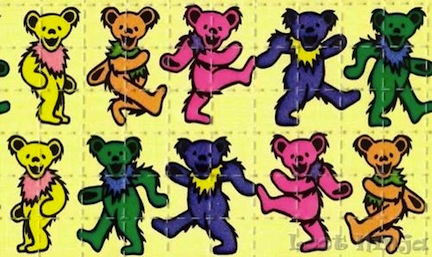
Owsley blotters
He went to Cal for a semester in 1963, dropped out, and went to work, at a day job in San Francisco and a night job working here. The working here was the part that got him in trouble. Narcotics agents raided his home/lab on Virginia Street on February 21, 1965.
The house was known as “The Green Factory.” No hint of that glorious past visible now. Owsley was charged with operating a laboratory that produced methedrine. He beat the charges and went on to operate LSD manufacturing labs in Point Richmond and Orinda (!) and Denver with his chemist partner Tim Scully.
And Denver and Orinda. Orinda? Really?
In 1967, Owsley moved into a house on Valley Street:
Here is what Charles Perry wrote in Rolling Stone, November 25, 1982: “Sometime in the spring of 1967, Owsley moved into an ultra-quaint cottage on Valley Street in Berkeley and filled it with Persian rugs, hi-fi equipment, Indian fabrics, Tibetan wall hangings,pillows, hash pipes, musical instruments made by his personal guitar maker and all sorts of electronic toys, such as ultraviolet lamps and strobe lights. He’d decided that Melissa’s totem animal was the owl, so he got her a pet owl that was always escaping from its cage. My supposed professional skills as an animal caretaker were often called on to lure the bird back to its cage. The Troll House, as some people called it, was a regular stopover for the transcontinental psychedelic elite, from Richard Alpert (later known as Baba Ram Dass) to out-of-town rock musicians. There was usually somebody trying to sleep on the pillow-strewn floor while the 24-hour-a-day party lurched along. I dropped by every week or so to see the latest wrinkle: ether-extracted THC, the advance copy of the Beatles’Sgt.Pepper’s Lonely Hearts Club Band or whatever.”
Rhoney Gissen Stanley, laboratory assistant to Owsley and mother of one of his children, remembers the house: “Bear’s brick house on Valley Street in Berkeley, built by the Fox brothers, was big enough for all of us to feel comfortable. It resembled a whimsical storybook house, a Hobbit house with a steep gable roof of wooden shakes, a cylindrical chimney, sloping sides, and oddly shaped stained-glass windows. A cobblestone walkway led to the front door set in an archway. Inside were high ceilings, wooden beams, and stucco nooks like adobe altars. ” From Rhoney we learn who brought the owl into the house:
Terry the Tramp. The ultimate Hells Angel. I can’t imagine Terry the Tramp in a Fox Brothers house. But, I guess, that was then and those things could and did happen.
Trench coat, tweed jackets, glasses, a pipe. Dapper. Ralph J. Gleason was in the beginning a jazz critic, and a very good one. He embraced Lenny Bruce and Bob Dylan and rock and roll with an open mind that is uncommon. He dug the Beatles.
And he lived in Berkeley, in several houses, including this brown shingle on Ashby:
Another of his Berkeley homes was on Spruce:
He was a leftist politically and catholic culturally. Of San Francisco and, relevantly here, of Berkeley.
He was ours. Read a few columns. You’ll see how special he was.
Also of us is County Joe McDonald. Before Woodstock and that fame, Joe was an earnest folkie in Berkeley.
He and his bandmates lived in an apartment at 2901 Telegraph before fame and fortune. Here is what that apartment looks like now:
Joke! Sic transit gloria mundi! Trying again:
Gone. Flat gone. Dead gone. Totally gone.
Not far from this parking lot is the house where folk song Malvina Reynolds lived.
Malvina Reynolds was a folk singer-song-writer. She issued her first album, Another County Heard From in 1960. Reynolds had long been active in the San Francisco Bay Area, and through the California Labor School had published a small book Song in My Pocket in 1954.
She was best known for writing and performing “Little Boxes,” decrying the Westlake tract built by Henry Doelger in Daly City just south of San Francisco and urban sprawl in general. It is not my favorite of her songs. Tom Lehrer somewhat snarkily called it the most sanctimonious song ever written in America. Me, I perform “What Have They Done to the Rain?,” either performed by Malvina or by Joan Baez. Marianne Faithful recorded it – quite a video The Searchers sang it too. Not my favorite version. Even today it’s message about atmospheric nuclear testing is to-the-heart.
Here she is a photo of Malvina performing in Berkeley in 1964:
And then in 1969:
The National Guard occupied Berkeley. She told them what she thought about that. She then wrote a shorter message and found herself full-page in the Tribe, May15-22, 1970.
She called herself the Muse of Parker Street. Here is her house on Parker Street today:
There are great vibes on Parker Street. I admire her greatly.
Putting down our acoustic guitars and hauling out our Gibson Les Paul, let’s visit a Berkeley property associated with the Pride of El Cerrito’s, Creedence Clearwater Revival. “Cosmo’s Factory” was Creedence’s fifth album.
The band rehearsed for the album at a warehouse just off Gilman. Here is a insert-hyperbolic-adjective-of-your-choice-here video of the band rehearsing in the warehouse that came to be known as Cosmo’s Factory.
Legend has it – “Leader singer and guitarist John Fogerty was so demanding of perfection that drummer Doug ‘Cosmo’ Clifford began referring to the place as ‘the factory.'”
Here is the warehouse/factory now:
Nowhere near as funky as it was all those decades ago. It isn’t far from the blue barn and the soccer fields where my daughters practice(d) and play(ed). And not far from where Cowboy was murdered. He’d watch our soccer practices and I’d pat his big white dog.
In The Big Lebowski, Jeffrey “The Dude” Lebowski (Jeff Bridges) has a cassette of the Creedence album in his car stereo. Here is a brilliant scene with music from Cosmo’s Factory. Lots of good songs came from this warehouse.
You perhaps remember – if you read the Mission Statement for this quest – that I am not a big fan of the name “Beserkley” or any of its variant spellings. One exception and this is Beserkley Records. They ran their business out of a house on Spruce Street. Here it is on a poster:
And here it is today.
Here is a quirk that I like about Beserkley Records. Before they charted a single hit, they released an album of greatest hits.
 Quirky! The house is on the way up to Codornices and the Rose Garden. You’ve seen it, I am sure.
Quirky! The house is on the way up to Codornices and the Rose Garden. You’ve seen it, I am sure.
That’s it for now. I’m guessing there are more. And yes, I know, there is not a lot of material culture here. See now and imagine then. It could be said that this is a backdoor excuse to talk about something off topic. But it informs who we are, even now. I acknowledge the weakness of my argument – but I love the idea. I’m standing by my idea here.
My friend looked through the photos, slowly. He looked up at me with sad eyes. “Can you tell me please, who won?” That’s what my friend said, wistfully, when he looked at these photos. He was, of course, resorting to musical lyrics. He knew most of these places in the day. He hadn’t seen them in a while. And now what is there to see? He then got poetic on me. “Like sand through the hour glass.” To break him away from the melancholy that he was slipping into, I pulled out one of his books, an exploitation/stereotype/sensational work that he finds amusing.
I put on the soundtrack from The Big Chill
I suggested that we sit down together and watch The Big Lebowski for the Nth time and after that Return of the Secaucus 7.
I know my friend. This perked him up, so told him that I wanted to now what he thought of these photos. He rallied:















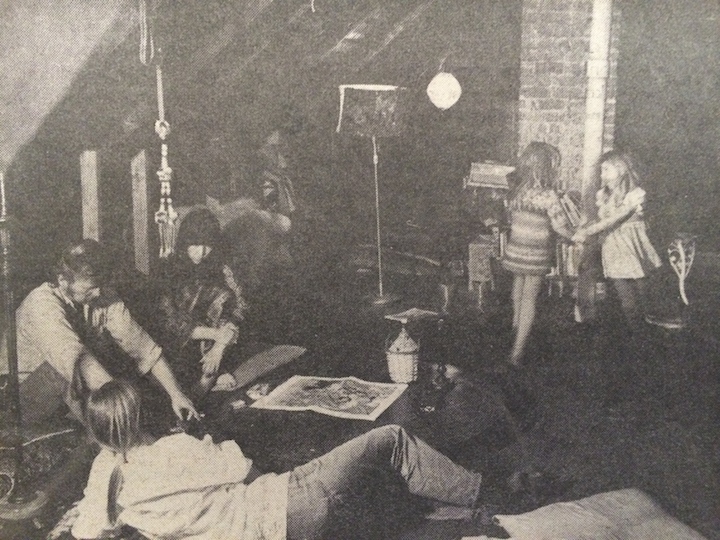










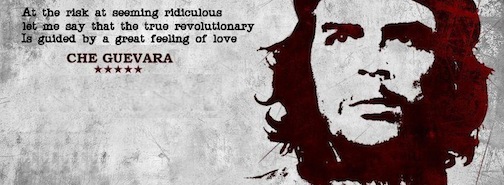















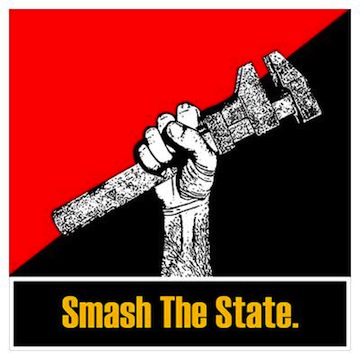








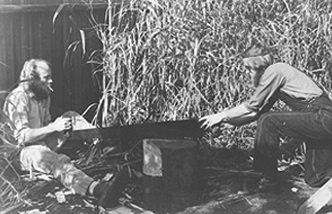






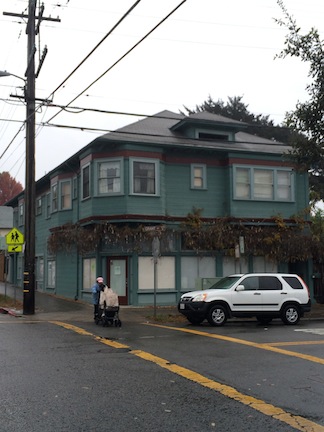

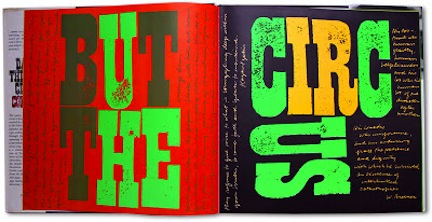





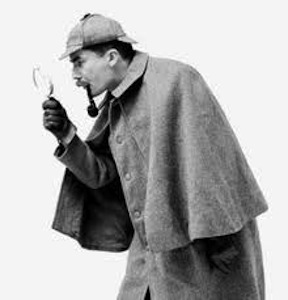











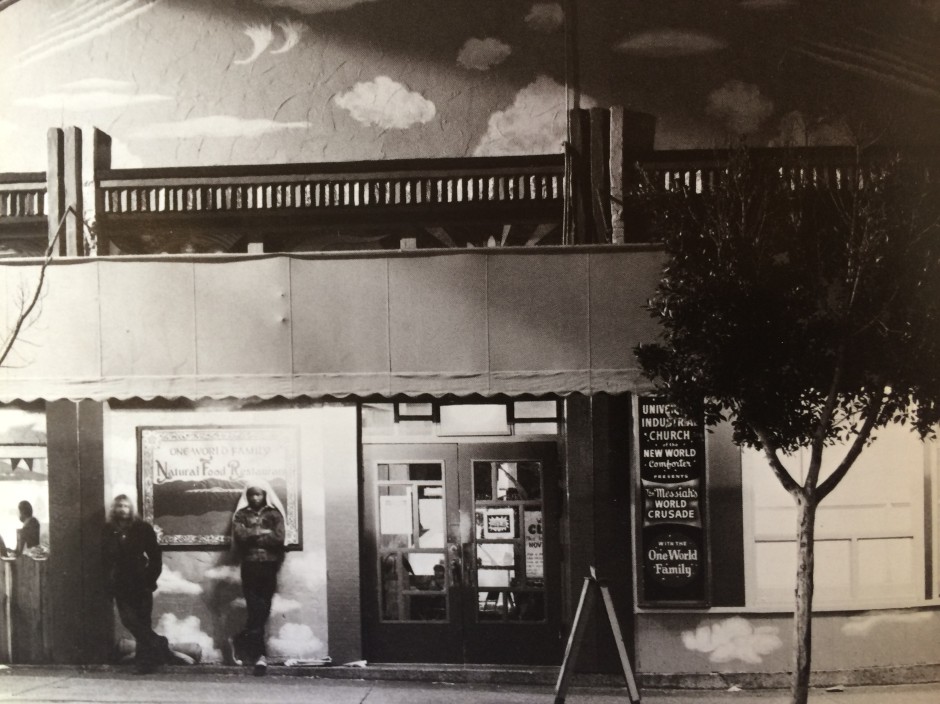


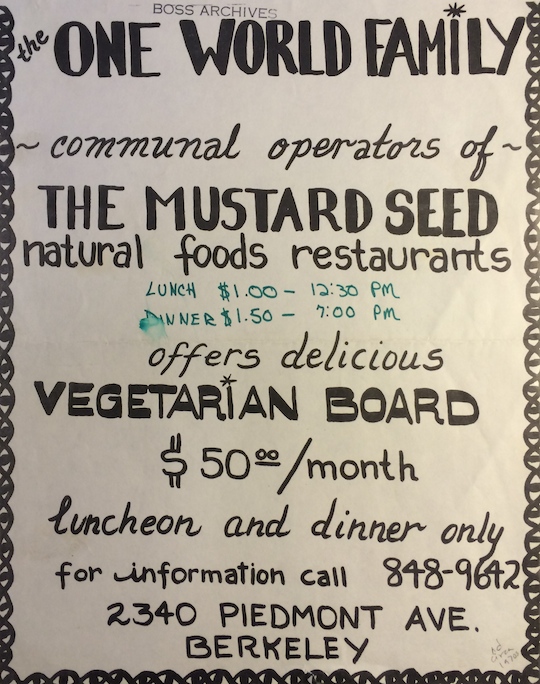

























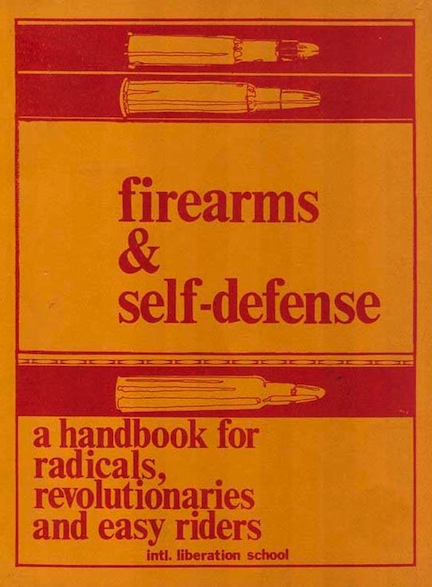

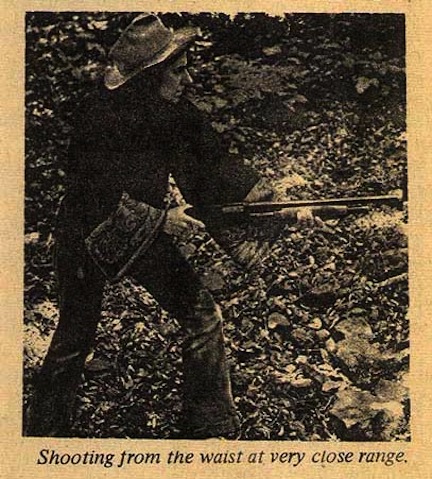




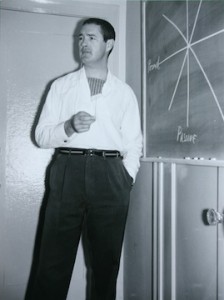













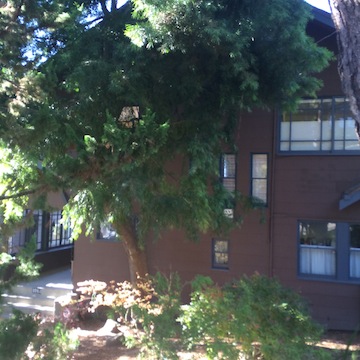



















REally enjoyed your site. A trip down memory lane. Glad you were able to use some of the material from my article on communes in the McGee-Spauding-Hardy district posted on our website: www. mshhig.com I can solve the mystery of the location of Karl Marx’s Magic Bus. It was at 1641 CHANNING Way. I made a mistake in my article and wrote Dwight Way.
Another mistake. I meant 1631 Channing Way. This old brain is getting just too rusty.
I moved to Berkeley from Boston in 1968. We drove across country with our children, daughter 3, and son 10weeks. I’ve lived in Berkeley ever since. A friend forwarded me this and I’m writing because of the nostalgia I’m feeling after reading it and remembering so much of my past.
I sold the ‘Barb’ in San Francisco, raised my children to question everything, and helped create a profession I’m truly proud of. I know all this could not have happened anywhere else.
Thanks for the post! Cheryl
Troy McKelvey sold the Barb also. Do you remember him? Thank you so much for this great site. I was born and raised on ETNA ST. Was a Pacifist Quaker who tried to END THE WAR out at Port Chicago by lying down in front of Napalm trucks. GOOD ole daze…
Intentional Communities are still around and doing well.
I worked at a CSA in Northern NY that has been around for decades, that is also a Intentional Community.
Nice people, hard workers, a very well run farm, with a dairy cow. 🙂
ha! i see a dylan poster in the photo “Sandy and Mike Photo by Larry Keenan Sandy and Mike – Photo by Larry Keenan” that i got awhile back on ebay. its designed by a Red Cross Rainbow Productions. anyone know anything about them? thanks.
One commune you failed to mention was Doomsday House at 2208 Roosevelt St. It was home to a strange guy named Kalagi, the Prince (because of his Prince Valiant look). It existed from about 1967 through 1971. I lived there about 2 years and supported myself by selling The Barb on the corner of First and Mission in San Francisco. Back in the days before Bart that’s where the Trans-
Bay Transit terminal dropped off the commuters and then collected them again at the end of the day.
That was meant to be Kalagi and The Prince. Most of us graduated from Ahimsa House on College Avenue.
I was a “member” of the anarchist commune on Parker Street (just across the street from Malvina Reynolds’ house), the story about the counterfeit Rolling Stones tickets is 100% true. We had a friend who liberated over 1000 ticket blanks from “Ticketron” and another friend found out that the promoter (Bill Graham) inteneded to catch phony tickets by putting a black light stamp “Stones” on the back of the tickets. We carefully laid-out and printed the tickets to looke exactly like a “Ticketron” printer and and an artist who lived in the commune hand-cut a perfect copy of the rubber stamp. None of our tickets got caught except for one: on the ticket we gave to a leech who nobody liked we changed the stamp to “Fuck Bill Graham!”.
How can you have omitted one of the largest, wildest, and longest lasting of Berkeley communes: Earth People’s Park?!
They had many houses throughout Berkeley, both in the hills and flatlands. They had epic battles with the Berkeley PD over marijuana, including a police raid caught on video where the cops took hundreds of plants ready for harvest from the back yards. They had loose coalitions with other organizations including the White Panther Party.
Perhaps there’s some class prejudice here…they were truly from the lower classes (with a few members who weren’t, including one professor who was among the early cryogenics proponents) and didn’t originate in the university.
I’m working on a second post on communes – will definitely include this one. Were you involved?
Hey did mention the anarchist.
Hi
I was one of just a handful of kids living at EPP with my mom and sister, between the years of 74′ and 77′. We were a commune that was true, ‘all are welcome’ kind of a commune. Smart, sassy, radical, ragtag, revolutionary, organizers, dysfunctional, happy, stoned, musicians, artists, drug dealers, young, old and whatever else you were or wanted to be.
Chris Romano:
I remember you. How is your mom? I hope you are OK. The addresses of the Earth People’s Park Commune was 935 Addiso0n Street and 2018 Ninth Street. They had adjoining back yards. We had chickens roaming loose laying eggs wherever they felt like it. The house on Addison was painted five different bright colors in a psychedelic design. There were up to fiftenn unlicensed dogs roaming the premises.
2901 Telegraph was the Jabberwock music cafe. Doc Watson, Country Joe, John Fahey, and others played music there. Country Joe lived behind the Jabberwock on Russell in the apartment owned by Mrs. Sherrill.